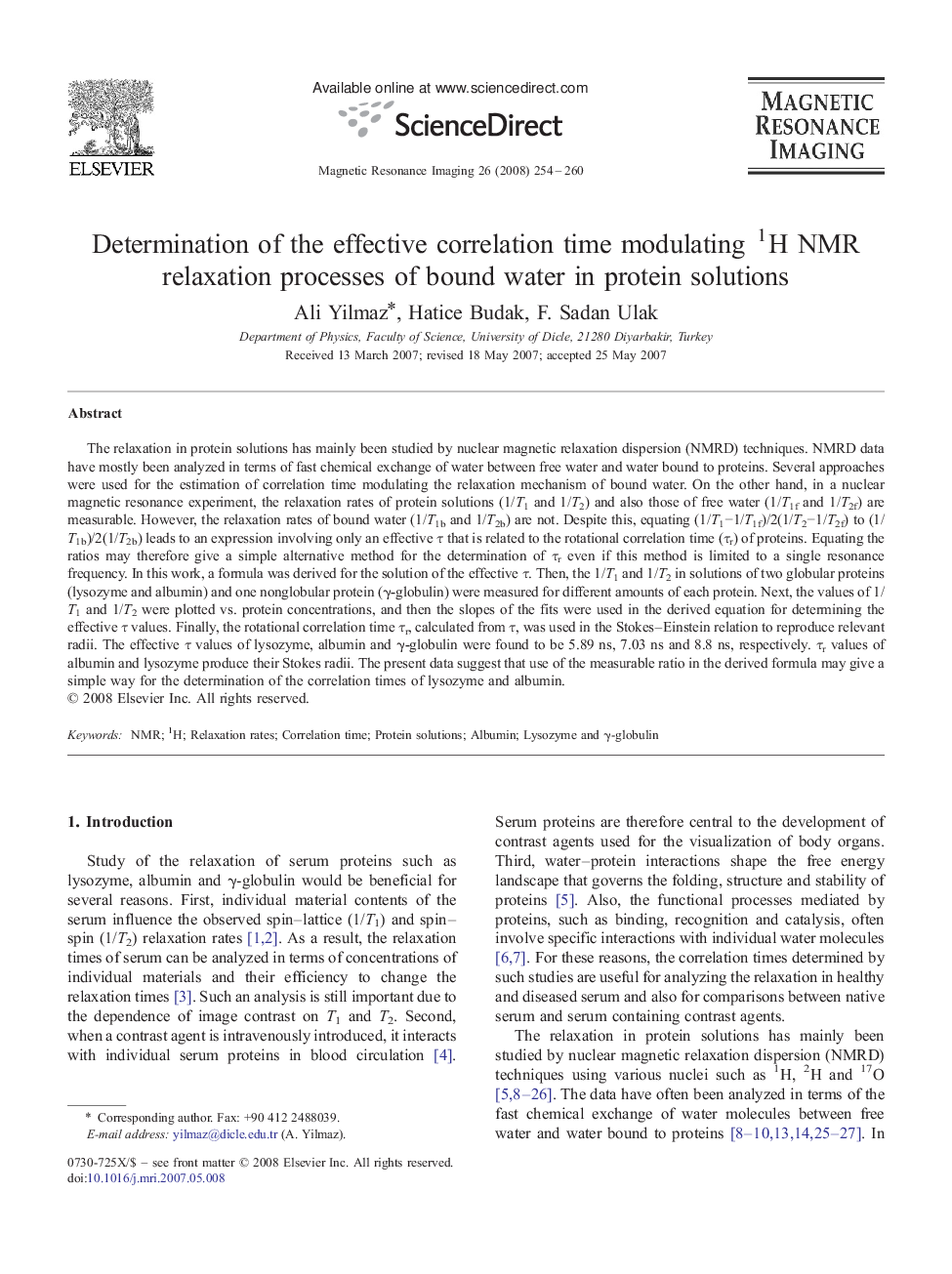| Article ID | Journal | Published Year | Pages | File Type |
|---|---|---|---|---|
| 1807672 | Magnetic Resonance Imaging | 2008 | 7 Pages |
The relaxation in protein solutions has mainly been studied by nuclear magnetic relaxation dispersion (NMRD) techniques. NMRD data have mostly been analyzed in terms of fast chemical exchange of water between free water and water bound to proteins. Several approaches were used for the estimation of correlation time modulating the relaxation mechanism of bound water. On the other hand, in a nuclear magnetic resonance experiment, the relaxation rates of protein solutions (1/T1 and 1/T2) and also those of free water (1/T1f and 1/T2f) are measurable. However, the relaxation rates of bound water (1/T1b and 1/T2b) are not. Despite this, equating (1/T1−1/T1f)/2(1/T2−1/T2f) to (1/T1b)/2(1/T2b) leads to an expression involving only an effective τ that is related to the rotational correlation time (τr) of proteins. Equating the ratios may therefore give a simple alternative method for the determination of τr even if this method is limited to a single resonance frequency. In this work, a formula was derived for the solution of the effective τ. Then, the 1/T1 and 1/T2 in solutions of two globular proteins (lysozyme and albumin) and one nonglobular protein (γ-globulin) were measured for different amounts of each protein. Next, the values of 1/T1 and 1/T2 were plotted vs. protein concentrations, and then the slopes of the fits were used in the derived equation for determining the effective τ values. Finally, the rotational correlation time τr, calculated from τ, was used in the Stokes–Einstein relation to reproduce relevant radii. The effective τ values of lysozyme, albumin and γ-globulin were found to be 5.89 ns, 7.03 ns and 8.8 ns, respectively. τr values of albumin and lysozyme produce their Stokes radii. The present data suggest that use of the measurable ratio in the derived formula may give a simple way for the determination of the correlation times of lysozyme and albumin.
